It feels like old news at this point, but earlier in the week, noted Writer of Stuff Peter David shuffled off this mortal coil after a long and protracted battle with an assortment of health conditions. Peter had been so ill for so long that his passing came as no great surprise, but it was affecting nonetheless. He was a prolific writer, as well as being very overtly a fan as well as an author. It was clear that he loved comics and science fiction and all sorts of media. I’d typically run into him outside of our regular circles at assorted Doctor Who events. He had a strong and focal fan base for his work, some of which was fostered by his long running “But I Digress” column which ran weekly in the Comic Buyer’s Guide for decades. The three collections of material from those columns are still worth seeking out. Peter made his bones as a writer on INCREDIBLE HULK, a series that was seen as being thematically limited when he took it over. He proceeded to turn that series inside out, adding to its lore and propelling the character through a sustained twelve year run. He was also a huge Star Trek fan, with dozens of novels and comics set within its universe to his credit. His work was characterized by always containing a large amount of humor—occasionally to its detriment, as Peter could never resist a pun—but where he was best was in mixing that humor with genuine pathos. He was also very active when it came to causes he believed in, He worked for years with the Comic Book Legal Defense Fund on behalf of free speech and the right of writers to say whatever they wanted to communicate. He could also be an enormous pain in the ass, but he had a genuinely good heart, and he was seldom malicious or nasty. I worked with him a number of times over the years, but I can’t really say that I knew him well; my choice more than his. As an editor, I tend to keep most creators somewhat at arm’s length, because it’s inevitable that I’m going to need to deliver bad news to people at some point and that’s not easy to do with people you’re close to. But he was a decent human being, always tried to do good and to be the best that he could, and he took an almost childlike glee in the things that he loved. There comes a point in life when all that you have to look forward to is all the people around you that you’ve known for years dying, until at last it’s your turn. And so I’m firmly in that stage of existence now.
Switching gears entirely, the screengrab below made me absolutely delighted, for reasons that I’m hard-pressed to fully articulate.
That’s a still from the opening titles to impending revival/update of the animated series KING OF THE HILL, which will be dropping on Hulu in a few months. I wasn’t a fan of the show when it premiered—Mike Judge’s other series BEAVIS & BUTTHEAD legitimately gave me a pain—but I would up getting hooked after catching a particularly strong episode in syndication. For an animated series, HILL kept its feet on the ground, containing nothing fanciful or out of the ordinary. It could practically have been shot live action, except that the freedom of animation allowed the show to do stories that would likely have been too costly if you were simply filming them on a television sitcom budget. It was the precisely-drawn characters, whose virtues were expertly balanced against their foibles and shortcomings, that made the series so memorable. The new show apparently picks up years later, and the title sequence swiftly illustrates all of the changes that have transpired for the Hill family and for the town of Arlen in the intervening years. It’s been making the rounds pretty heavily, but if you haven’t seen it, it can be found at this link. Everything is all going to come down to the writing, as it always does, but just based on that title sequence and the image above, it strikes me as being note-perfect.
And now, on to this week’s questions:
Joe West
Has the potential of Miles Morales, Kamala Khan and Sam Alexander as a superhero trio ever been discussed at Marvel? Not just during ANAD Avengers and Champions books, but out on their own à la Spider-Man and his Amazing Friends?
That’s a very specific question you’re asking, Joe. Certainly, that trio was used as a trio in both AVENGERS and CHAMPIONS as you say, and especially Miles and Kamala have shared a number of stories together. But them as a trio without other characters around doesn’t really seem to be anything that anybody has much been thinking about. So not really.
Brandon
Is iceman still gonna be part of the cast of exceptional after issue #10 like kitty & emma are gonna stay for sure but how about bobby everything that was said is that he's gonna be sticking around so after this last issue or issue #10, is he still gonna be in the book for issue 11 and 12 and the others that may come for as long as the book is going
I feel as though I’ve answered this for you previously, Brandon—or if not you, then somebody else with the same concerns. But I’ll say it again: Iceman is a part of the cast of that series, so he’ll continue to make appearances in EXCEPTIONAL X-MEN.
Grant
Considering the controversy that surrounded the "Captain America: Steve Rogers" series, is there anything you would change with hindsight? Or do you feel the general premise of the story would get that kind of reaction no matter what?
I think there was a specific confluence of events outside of the comic book industry that resulted in that reaction getting so much traction, Grant, so timing was a part of it. But also, there were plenty of people who were uninvolved in reading comics who decided that they needed to be outraged about those developments as part of their larger culture war battles. Those folks, I didn’t tend to pay a lot of attention to at all, as they were irrelevant to the sales of the series. So no, I wouldn’t do any of it any differently (except perhaps to find some way to deliver electric shocks to writer Nick Spencer so that he’d get his material done slightly earlier.) No matter what you do, no matter what story you tell, there are going to be those who aren’t going to like it, and in order to do your best work, you can’t be cowed by what people might say about the work. And almost a decade later, Captain America is still fine and well, so all of that agita was ultimately a tempest in a teapot anyway.
Mark Coale
We were talking about the journey of Zemo in Thunderbolts and how quickly it was undone in Brubaker’s Cap. Given you were Thunderbolts editor, how did you feel Zemo and to a lesser extent Batroc, reverting back to villainy in the Cap book? This ties into the whole notion of rehabilitating bad guys I’ve mentioned in these comments before.
In most cases, Mark, I think rehabilitating villains, especially long-running villains, is an uphill battle. Because if a villain is that popular, then eventually you’re going to want to pit them against their recurring nemesis again. So while Fabian did a lot over the years to make Zemo a more fully-realized character, I never really thought that any of it was going to be redeeming him—as opposed to, say, Songbird or MACH-V, Zemo was the most irredeemable of the Thunderbolts, and it was only going to be a matter of time before somebody was going to want to pit him against Captain America and the Avengers again. The best case would be to make him sympathetic enough that it added additional gravitas to that eventual clash.
Lucas
In Exceptional X-Men last issue iceman fought a clone himself and his last mini was mentioned too so that is something that might be brought up again in the issues to come or it was just something for that issue?
There wasn’t any greater connection between the events in that issue of EXCEPTIONAL X-MEN and the preceding ICEMAN series, Lucas. So no, not really.
David Pierce
is the Bring on the Bad Guys mini set in the past or the present? Wondering because it seems strange to feature Doom in it while One World Under Doom is going on.
The BRING ON THE BAD GUYS event takes place in the past, yes, David. And if nothing else, it’s a place to see a very classic Doctor Doom while he’s in a different status quo in the present, and while interest around the character is increasing thanks to his impending use in the upcoming AVENGERS film.
X of Alex
That illustrated Fred Hembeck letter is delightful! Is there any place were one could go to read the others you mentioned?
It’s been years since I last read it, Alex, but I seem to think that Fred included at least a letter or two that he’d written in this enormous Omnibus of his past work. But even if not, I can point you to IRON MAN #112, in which writer Bill Mantlo printed one. I talk about it on my Blog (and reproduce the letter) here.
Sev
Please give us the grand unifying theory of Scott and Jean! Please! You've been teasing us for months, and some of us are dying of thirst over here. We need the theory!
You’ll get a microcosm of it, Sev, in GIANT-SIZE DARK PHOENIX SAGA #1 in just a few weeks.
Brandon Giles
My question is about communication during the transition between Krakoa and FtA. Several writers have expressed that they didn’t know exactly how Krakoa would end even as they were scripting their books for FtA, which is why, for example, Storm’s no longer with Craig Marshall and Magneto (this is one I’m personally disappointed about, ngl) doesn’t appear to be carrying his resolution that he’s going to fight for all oppressed people forward in any way. From the outside, it feels like this is a situation that could have been resolved with a few email exchanges between writers. Was this just something that was overlooked or was it a choice to create more narrative distance between Krakoa and FtA?
I don’t see as much discontinuity there as you do, Brandon, but that may simply be me being less invested in certain relationships and situations than you were as a reader. So some of what you’re talking abotu is choice, and some of it is the byproduct of a bunch of different people working on stories simultaneously. Remember, we started work on those initial FROM THE ASHES series close to a year ahead of time, so while the preceding editorial office could tell us certain things about what they were planning, even they wouldn’t have quite known every detail of every story that was going to happen between then and when we took over. So it all mostly got dealt with in real time as we all worked. I haven’t gone back and looked or anything, but I’d bet my hat that Jed MacKay had written the script for X-MEN #1 (and possibly an issue or two beyond that) before Al Ewing had finished his work on RESURRECTION OF MAGNETO, so that course had already been set.
Joel Zorba
My question is about the Phoenix. Ever since AvX, or a little bit before, the Phoenix force has been used so much that it's become a really, really confusing trope. What is and what isn't canon at this point?
You had a much longer and more detailed question, Joel, so forgive me for editing it down to just what I think is the crux of what you’re asking about. And my answer is quite simple: all of it is canon. All of it still “happened” (as much as anything can happen in fiction) but the context under which some of it happened has changed as new developments have revealed new details.
Venus
I wanted to ask about when you became aware of the "comic writer." I distinctly remember thinking whoever was drawing also did the writing and was unaware there was a job for writers. When did you realize that separation and what writer do you remember distinctly being someone you liked?
When I was very young, only around seven years old or so, I read FLASH #228 in which series writer Cary Bates passed through a dimensional rift and wound up in Central City, helping the Flash to defeat his foe the Trickster. So that would have been when I first truly became aware that there were people who were writing and drawing the comics that I was reading. And so, Cary was an early favorite, for his work on FLASH and SUPERMAN as well as assorted other things.
Manqueman
Quick question re the Epting/Perkins Cap run:I always thought that they worked separately. Some pages would be all Epting, some all Perkins?
Mike Perkins drew certain issues all by himself, Manque, but he also inked Steve Epting on issues as well. That page that I own is from one of the latter.
Domixt
I recently reread the first Bendis Avengers run. Really enjoyed diving back in! What really surpised me was how much it drove the main narrative of the Marvel Universe for so long, from Disassembled to Siege. More recently, there really hasn't been a single run that is driving the MU. Is this due to a more segmented MU, runs being shorter, or has it just made more narrative sense to showcase different titles at different times? (War of the Realms and Thor, Daredevil and Devil's Reign, Avengers and Moon Knight and Blood Hunt, Eternals and X-Men and Judgement Day).
There’s a much simpler, much more straightforward answer to this question than you might imagine, Domixt. Put simply, Brian and then-Editor in Chief Joe Quesada were very close, and spoke with one another often, which means that Joe was hearing about, and having input into, Brian’s ideas at a formative moment. And Joe was in a position to carry those ideas across to the rest of the universe, and to get behind those ideas that really clicked with him. But since Joe left that job, there hasn’t really been any other writer who has had quite that same relationship with any later EIC (including Brian with, say, Axel Alonso) so nobody else has been able to do the same thing. And this also explains why Brian’s track record in that regard wraps up around SIEGE—it was around then that Joe was stepping back from his EIC role (though he was still in the position for a year or so beyond SIEGE.)
Jeff Ryan
How much advance information do cover artists get? Alex Ross's seem integrally tied to that particular issue. Others are of course just pin-ups. Is that up to the editor to decide?
The cover artists will get instructions from the editor about what is being sought in a particular cover, Jeff. Different people do this in different ways—for myself, I always ask my writers to provide a potential cover concept for their issues. Sometimes those will get used, sometimes I’ll have another idea that I think is better in some respect, and sometimes the artist will come up with something unexpected and striking.
Patrick Cabahug
We all know the Phoenix placed Jean Grey in the cocoon, which she stored away in Jamaica Bay, Queens.
But do we know that, Patrick? Or is that just what we believe happened? How did we come by that information? The Phoenix told us that’s what happened, right? So what if it wasn’t being forthcoming?
TD Mollusk
Aside from Stan Lee, what Marvel staffer or creator do you think has made the most appearances in comics? My guess is Jordan D. White, but maybe that’s recency bias or just mustache recognition.
Oh, I don’t think it’s Jordan, TD. If I had to hazard a guess, I’d suggest possibly John Byrne. John clearly always liked those early stories where Stan and Jack would draw themselves into the story, and so he did the same on numerous occasions. I’d bet that Byrne’s appearances in SHE-HULK alone would outnumber Jordan’s appearances.
David Brazier
As I sipped my cider in The Woodman Pub on Friday I thought of you zoom as on the next table was Chris Chibnal who also lives in Bridport. I stopped myself from asking him Dr Who questions but I will ask you Tom - what is your favourite Dr Who,episode of all time?
Well, hope that both you and he had a good time at the Pub, David. And you’ve given me the opportunity to plug two more pieces from over at my blog, so that’s nice, too. This one listing the Fifteen Best Modern DOCTOR WHO Episodes has proven to be quite popular judging by the traffic it gets. And there’s also this one that does the same for Classic DOCTOR WHO stories.
Icefanatic
In the 1970's a fan theory emerged during the Phoenix Saga that Iceman was an opposite to Jean Grey/Phoenix called 'the Dragon'. It was developed into an actual story in the 1980's by J. M. DeMatteis & Louise Simonson. It was derailed at times by circumstance and then blocked by editorial(Bob Harras) for a long time. It was eventually back on in fits-and-starts after his departure. Do you have any knowledge of it? And for those of us who have been waiting anxiously for DECADES to see this come to pass, do you have any hope to give us?
As this is something that I’ve never before heard of, Ice, that doesn’t seem likely. And I have to say, on the face of it, that idea sounds a bit mad. In what way would Iceman be an opposite and opposing force to the Phoenix? Was it some manner of five vs ice concept, perhaps? And am I just not remembering this story that Marc DeMatteis and Weezie Simonson worked on? Seriously, this question has left me pretty baffled. So feel free to provide a bit more detail if you’re of a mind to.
Ben Forte
Is it more difficult for a writer to pitch or for an editor to put together a series set in an alternate universe(both in the case where it's an established universe like the New Universe(E-148611) or the MC2(E-982) but also in the case where it's a completely new universe)? It seems like Ghost-Spider(Gwen Stacey) is being moved to the 616, what might be the advantages to having her stories be set in the 616 over keeping her on Earth-65?
A writer can pitch whatever idea they want to, Ben. But in terms of mounting a series that has a decent chance of success, the common wisdom is that setting those series within the established continuity of the mainstream Marvel Universe gives them the best chance of long-term success. There aren’t a whole lot of examples of us publishing titles set in other universes, not long-term. Yes, you can always point to a couple of outliers, but that’s exactly what they are: outliers. And the advantage to Spider-Gwen’s stories being set within the MU is that the audience as a whole is more likely to feel like those stories “matter” to a greater degree than they might with them taking place in some other universe that doesn’t really stand much chance of impacting on events in AVENGERS or HULK or DAREDEVIL or whatever.
Andrew Albrecht
As I feared, it seems like I’m missing crucial Kamala story from sitting out the giant size x men one shots. I wish her story was being continued in an ongoing that was easier to follow, or the present day. I’ve been reading her books (two miniseries and NYX) for hopes of this kind of story. Buying a bunch of one shots that are massive and about the past just isn’t appealing for me currently.
I don’t know what you want me to tell you here, Andrew. I can’t arrange my publishing plan around specifically what you want to purchase. The deal is the same every time out: we put together the work, and then it’s up to you whether you feel that it’s worth your money, time and attention. And if it isn’t, no harm in that. You get to choose.
Seastar
About that new person at the end of the issue, by Ewing and Pichelli, how do you ensure that new characters are used across books so their impact is felt? Especially for villains, it feels like writers create them and then when that writer leaves, those villains might as well not exist. But also for new heroes. I would hate for Bronze or Deathdream to end up forgotten if Eve Ewing or Gail ever leave the X-Men.
This can be a tricky question, Seastar, and it’s especially tricky in this era where certain characters are occasionally viewed as being the “property” of the writer who created them. But the Marvel Universe is meant to be a shared world, and that means that it may be up to the editors to suggest characters who’ve been established in recent years (and who the writers of that era aren’t going to feel any nostalgic attachment for) who might be used in new stories that are being cooked up. Now, you can’t do this with absolutely everyone, but when it’s done right, it can give those characters the legs they’ll need to carry forward. For example, I’d say that Brian Bendis picking up and using characters such as The Sentry or The Hood in NEW AVENGERS helped make those characters fixtures in the universe—and also made it easier for other writers to want to use them thereafter.
bic2
Are you involved in the upcoming Marvel and DC crossovers?
Not directly, bic2, no, though I’ve read the scripts for both company’s books and given a couple of comments back on each of them. But I’ve done a bunch of this before in the past, perfectly fine to let the new generation have a go at things.
JV
what did you think of the Deadly Genesis retcon series and the 3rd Summers brother? How did it comes about? Do you consider it canon? Would you revisit it?
I’ll be honest and say that I don’t remember a great deal about the specifics of the plot of DEADLY GENESIS, JV. But I like the characters in that short-lived second X-Men team and feel as though they represent some real untapped potential. So I wouldn’t be surprised to see them come back again, Darwin in particular. As a resolution on the mystery of the Third Summers Brother, I don’t know that there would have been any resolution to that long-running boondoggle that could have satisfied the audience.
Off The Wall
Speaking of editors making appearances in Marvel Comics, here’s one of mine, courtesy of Matt Fraction and Mike and Laura Allred from FF #10. I’m generally not a fan of such appearances, they strike me as a bit too self-aggrandizing and not something that the audience in general particularly cares about or relates to. But in this case, Matt was structuring his run on FF to parallel developments in the earliest issues of FANTASTIC FOUR, and in that book, Stan Lee and Jack Kirby appeared as themselves in issue #10. So the whole creative team turned up for this issue of FF. And once it was all over, despite the fact that at the time he was holding on to just about all of his original artwork, Mike gave me the page above—as well as the beautiful print of Laura’s final color work on it that you see below.
On The Spinner Rack
We got one response to my question about what people wanted to see less of in this feature that singled out this Spinner Rack portion—which, of course, only makes me want to hit it harder, contrarian that I am. But perhaps we’ll move away from it in the coming weeks, we’ll see. Anyway, another turn presents us with a bunch of new books to take a look at. At the top there’s an issue of PRIME—it seemed like every fan in the early 1990s had one ULTRAVERSE book that they liked, but it wasn’t one consistent title. PRIME was mine. Though the series has become tainted a little bit by writer Gerard Jacobs’ incarceration—the specifics of which tends to change the reading of this material in an icky way. Under that is the first issue of Jack Kirby’s MACHINE MAN, followed by a random Julie Schwarz-edited issue of SUPERMAN and the not-very-good AMAZING SPIDER-MAN ANNUAL #4. Next is a random issue of BRAVE AND THE BOLD, a random issue of LOIS LANE, and the well-recalled sex issue of ZOT!. And on the bottom, we can see a lackluster issue of THOR from just before Walt Simonson took over, an issue of the underrated and forgotten SLAPSTICK limited series, and a classic issue of NEW MUTANTS.
And over on the rack dedicated to my books, we’re back around to the SILVER SURFER side, starting off with issues from the first and second volumes of that series. Below that is the great issue of FANTASTIC FOUR by Mark Waid and Mike Wieringo that focuses entirely on Doctor Doom. JLA/AVENGERS #3 is next, with that astonishing wraparound cover on which George Perez drew every single member of both teams. Next is CAPTAIN AMERICA #600, then the first issue of UNSTABLE MOLECULES, the first issue of the SECRET INVASION crossover, and an issue of SHIELD. And we wrap things up with the first issue of Jonathan Hickman’s INFINITY crossover and the first issue of Jason Aaron and Ed McGuinness’ AVENGERS.
I Buy Crap
I’ve mentioned in the past how I’ve been occasionally buying up runs from the short-lived ATLAS COMICS line of the mid-1970s, a shlock house that might have become a third major publisher of action-adventure material had they been better managed. So when I became aware of this volume available on demand at Lulu, even though I already owned a bunch of the comics it contained I decided that I needed to have one. It showed up the other day—and as a package, it’s only all right. Putting aside the quality of the material, which ranges from great to incompetent, the book itself is smaller than I would have thought, proportioned more like a YA graphic novel—that’s my iPad that it’s sitting on, to give you a sense of the size. So it’s a bit smaller than I would have anticipated. The interiors are all shot from printed issues of the comic, somewhat cleaned up and restored for this printing. But it’s not the most wonderful reproduction I’ve ever seen, possibly down to the repro quality of the original comics that they were working from. Its contents are an odd-lot bag, designed to get all of the most super hero-like strips into one volume. So the book reprints THE DESTRUCTOR #1, DEMON HUNTER #1, THE SCOPRION #3 (the issue where the narrative switches to the present day and the main character becomes a costumed super hero), THE GRIM GHOST #1 and JOHN TARGITT, MAN-STALKER #3. If you’re curious at all about this material (and two, two-and-a-half of these books are really pretty good) then it’s an easy and affordable way to get your hands on them.
Behind the Curtain
In honor of the impending new Marvel/DC crossover, I thought I’d share these images with you. These particular shots came from famous UK presenter Jonathan Ross, who owns the originals. This was the work-product for the cover to that very first SUPERMAN VS THE AMAZING SPIDER-MAN Treasury Edition published back in 1976.
What we see above are two loose cover sketches created by DC’s publisher and former cover editor Carmine Infantino. There was a third one as well, which is reproduced in the issue, but I don’t have an image of it here. The sketch at the lower right was selected largely because it keeps Superman and Spider-Man at roughly the same size as one another..
Once that sketch had been agreed upon by the two companies, Carmine produced this much tighter rough for the final piece. He included roughs for all of the lettering and trade dress as well.
And here’s that final original (with makeshift logos and dress positioned on it) as executed by Ross Andru and Dick Giordano, with some possible kibbitzing by Neal Adams and Terry Austin
And here’s a nice clean look at that original straight on, with the makeshift logos removed. A genuine bit of comic book history.
Pimp My Wednesday
I think we’re back on track again and we’ve got the calendar reoriented. So, hopefully, these three books will be waiting in your local comic shop on Wednesday.
X-MEN #17 continues the team’s battle with their 3K counterparts, all while Magneto pilots a half-destroyed Sentinel in order to protect the town of Merle from the rampage of Piper Cobb’s mutant sister. It’s written by Jed MacKay and illustrated by Ryan Stegman.
All sorts of things take place in STORM #9 by Murewa Ayodele and the returning Lucas Werneck. There’s interrogation, infiltration, invitation and excitation as the various forces surrounding Ororo Munroe all descend simultaneously. So it’s another wild, packed issue.
And the long-awaited IMPERIAL #1 hits stores this week as well, with Jonathan Hickman joined by artists Iban Coello and Federico Vicentiti as they reorient the Marvel galactic universe. It’s a big story, a vast story, with a ton of players in it, but hopefully we’ve done our job in making it as reader-accessible as possible. And it looks great! Also, as Jonathan’s first issues tend to be, it’s super-huge, way bigger than a regular issue and requiring two different artists to tag team on it and the remainder of the series. Also I love the design of these covers—they’re going to pop on the racks from a mile away.
A Comic Book On Sale 70 Years Ago Today, June 1, 1955
I decided to spotlight this issue of PIRACY not just because it was one of the final EC Comics to ever be published (as witness by the fact that it carries the seal of the Comics Code, a body largely dedicated to wiping the company out of existence) but also because this cover by artist Bernie Krigstein is something of a wonder. The trade dress blunts the impact a little bit, but still, there’s nothing t the visual in the upper 2/3 of the cover apart from that blazing sun. This wasn’t the way you sold comic books in the mid-1950s, but then EC wasn’t a typical comic book company. PIRACY was one of the firm’s “New Direction” titles, series that they began after their incredibly popular and profitable horror and science fiction series were all put out of commission by the strictures of the Comics Code. Publisher Bill Gaines attempted to pivot into other genres that wouldn’t be seen as so harmful, but the damage had already been done, and retailers were returning bundles of EC’s New Direction books unopened and unsold. EC almost went completely under, but Gaines had the last laugh. At the urging of editor/creator Harvey Kurtzman, he turned MAD from a comic book into a magazine, thereby side-stepping the comics code. MAD became a runaway success, and made Gaines phenomenally wealthy. over the years, pretty much all of those classic EC books have been collected and reissued in hardcover format, including the New Direction titles. So the forward-thinking and progressive work that the company had been doing had real staying power, even after a half-century.
A Comic Book On Sale 60 Years Ago Today, June 1, 1965
By the time that he was working on this second AMAZING SPIDER-MAN ANNUAL, artist and plotter Steve Ditko wasn’t even speaking with editor and scripter Stan Lee. Accounts differ as to who was responsible for this cold shoulder situation, but common sense certainly makes it more likely that Lee was the responsible party; as he was the boss, he could have demanded that Ditko speak with him, after all. Ditko had been plotting AMAZING SPIDER-MAN virtually on his own for several months, and you can see the change in the series if you look for it: gest-appearances from other Marvel heroes go immediately away, and Peter Parker begins to take on a different outlook as he graduates high school and enters college. He’s more comfortable in his own skin, and more of an almost-adult. The one exception that Ditko made in getting rid of all of the other Marvel characters was this Annual, which brought Spidey together with Ditko’s other hero, the mystical Doctor Strange. The two characters were very different from one another; Spider-Man lived in a grounded world of underworld goons and water towers, where Doctor Strange traveled the globe and routinely went to other fanciful dimensions. It’s that contrast that makes this story work, as the young web-spinner is almost immediately out of his depth facing a foe steeped in Strange’s world, but through pluck and determination, and the help of his heroic guest star, he’s able to fight his way through all obstacles. Being a massive Annual, this book also reprints a trio of earlier Spidey adventures, even though they were only a couple of years old by this point. enough new readers were discovering the funky spirit of these formative Marvel books by this point that they were a welcome way for new fans to get caught up on what they had missed.
A Comic I Worked On That Came Out On This Date
AVENGERS #30 was right towards the end of the collaboration between writer Kurt Busiek and artist George Perez on the series. It was released on June 1, 2000. In just a couple of months, George would call it quits to move to Florida and join up with the new start-up CrossGen. This was the conclusion to a three-part story in which Earth’s Mightiest Heroes contended with the sorcerer Kulan Gath—a character whose origins extended into the pages of CONAN THE BARBARIAN and whom consequently, Marvel may not have had the clear rights to use a that moment. But nobody stopped us, or brought it up at any point. This cover spotlights Silverclaw, a new character created by Kurt and George intended to inject some new blood into the Avengers, and to provide a bit of additional culture to the very white and very American super team. Silverclaw never quite caught on—I think that’s likely because we didn’t feature her prominently enough while George was still around, and so never gave readers enough of a chance to connect with her. So a bit of a missed opportunity there. But that’s what happens when you introduce any new character, you can never entirely control what the audience is going to like.
The New Warriors Chronicles
I don’t have all that much to say about NEW WARRIORS #64, sadly. It was another perfectly fine issue. That cover is pretty good, though I don’t know that an orange logo on an orange background was the smartest choice. But by this point, the creative team of Evan Skolnick and Patrick Zircher were very much in synch, and you can see Zircher’s work getting better and better every issue. This is the best-looking one so far, with some stand-out pages in it. Patrick was getting better about being able to balance and juggle the large cast that the series demanded.
This issue was the second part of the Warriors’ two-part battle with Genecide and her Eugenix henchmen. It also brought Night Thrasher and Rage’s new status quo to the fore: they were now leading Psionex, a group of rowdy young super-beings who’d been in opposition to the Warriors from the early days. It was a way of keeping those characters in the orbit of our series without having the cast become too unwieldy each and every issue. This story also delivered the revelation that prolonged use of her microwave powers was threatening to render Firestar sterile, giving her a secret that created a small wedge between her and Justice, who up to this point had been a pretty stable couple.
We also loop back around to Timeslip in this story, having her meet the Warriors properly and reveal what she’s seen concerning Speedball’s impending demise. We were also able to loop back around to that flash-forward page that we’d done back in #59, reproducing it virtually identically here (apart from a some minor differences in hair length and the like) and in so doing making Timeslip’s forecasting abilities appear genuine. Given that when we first created that page, we had no guarantee that we were going to be able to pull this off, it’s a minor miracle that things landed as they did. We must have been feeling pretty cocky, because in this issue Timeslip gives us glimpses of about a half-dozen additional future moments, all of which we’d have to work to made happen in upcoming issues. Evan was planning out his impending stories in great detail, but even so, there were always outside forces that we couldn’t control, so every one of these flash-forwards represented a narrative risk.
The thing that’s most amazing to me looking back at this issue now is the letters page. In trying to drum up additional support for the series, we were clearly making an effort to connect with the nascent online community. So not only do we give the addresses of the New Warriors-themed message boards on both America Online and rec.arts.comics, but Evan and I list both of our personal e-mail addresses, soliciting any comments that readers may have. We included an official NEW WARRIORS e-mail address as well, but the invitation was open to contact either of us directly. It was a very different time, what can I tell you? And yet, in a lot of ways, this Newsletter feels like the direct successor to those efforts.
Monofocus
This past week, I decided to crack into the first few episodes of VINLAND SAGA, the anime based on the long-running manga. It’s not a show that I might typically seek out, but I’d heard good things, and so I thought it was worth a look. And it very much has been so far. It’s a quasi-historical series, set in Viking times and featuring—at least so far—no fanciful or supernatural elements to it. Instead, it’s a very personal, very human drama concerning a father and a son in that rough Viking era. I have some broad idea of where it’s all going based on hearing about the manga, but I haven’t yet seen enough to be able to recount it accurately. But I’ve only scratched the surface of the 48 available episodes.
Elsewhere, RICK AND MORTY has returned for its eighth season, and was immediately back on point with a wild episode that did what the show does best: push an idea well past the comfort line and all the way to the furthest extreme. In the kickoff episode, in order to teach Morty and Summer a lesson about returning his borrowed phone charger, Rick traps them both in a simulated universe designed to impart that very lesson—then falls asleep, leaving them to live out decades within that world. When he finally brings them back to reality, they’ve both been profoundly changed by the experience—and neither one of them wants to lose those memories and be zapped back to their “factory settings.” It was wild, a bit scandalous, emotional and heartfelt, as the best RICK AND MORTY episodes are. Not every episode hits the mark, and with so much road behind it, it seems like it’s getting tougher for the series to land on original story ideas. But this one rocked it and made me excited for the rest of the season.
And over on Netflix, I sampled the first episode of BET, a Canadian adaptation of the manga and anime KAKEGURUI, which had been a real favorite of mine during the pandemic. Unfortunately, this production really doesn’t work. The tone is all over the place, and the show seems to want to be simultaneously both more wacky and more grounded as a teen drama than the source material—so both less cartoonish and more. But the real mistake here is in switching up the POV character and transforming Yumiko, the compulsive gambler who gives the series its name, into the central protagonist rather than the mysterious stranger who enters the protagonist’s orbit and changes everything. But the overall set-up is the same: there’s a private school attended by the children of the wealthiest and most influential people in the world on both sides of the law. But the Academy is corrupt, and so gambling is institutionalized, with those who run out of funds turned into virtual slaves of the winners. Into this environment comes Yumiko (Kawamoto in BET, Jabami originally) , a compulsive gambler with a vendetta and a pure desire to experience the highs of putting everything on the line. The source material is really good, as is the Japanese live action adaptation, but judging from just the first episode, BET can’t quite find the right balance to make it all work.
I also tried out the first episode of ADULTS, the FX Network’s attempt to find a new hit in the mold of FRIENDS. The set-up is fairly typical: five young twenty-something adults all share accommodations while trying to navigate life and work and love and ambitions. The big difference here is that FX allows the production to go a lot further than a broadcast network might, which means that ADULTS has a bit more of an edge and can venture into territory that might otherwise be considered verboten. The thing is—and judging this from only one episode isn’t at all fair—so far they haven’t used that additional freedom for anything worthwhile. I think there’s potential in the show, enough so that I’ll likely watch a second episode. But I’m still on the fence about the whole thing. It doesn’t really help that the five main characters seem to share a bit of DNA with FX’s other hit IT’S ALWAYS SUNNY IN PHILADELPHIA—by which I mean that they all seem to be pretty terrible people. I’m not sure that i want to spend time with these folks.
Posted at TomBrevoort.com
Yesterday, I wrote about the season finale of DOCTOR WHO
Five years ago, I wrote about Leo Ortolani’s fan-published Fantastic Four story done in Tribute to Jack Kirby at the time of Kirby’s passing.
And ten years ago, I wrote about a favorite cartoon series growing up, UNDERDOG
Man, I really have to find a way to cut these down, this installment took forever to get written. And yet, I can’t help myself—I’m simply too narcissistic I suppose and can’t stop yammering on! Anyway, more in the future, in approximately seven days!
Hat’s All, Folks!
Tom B






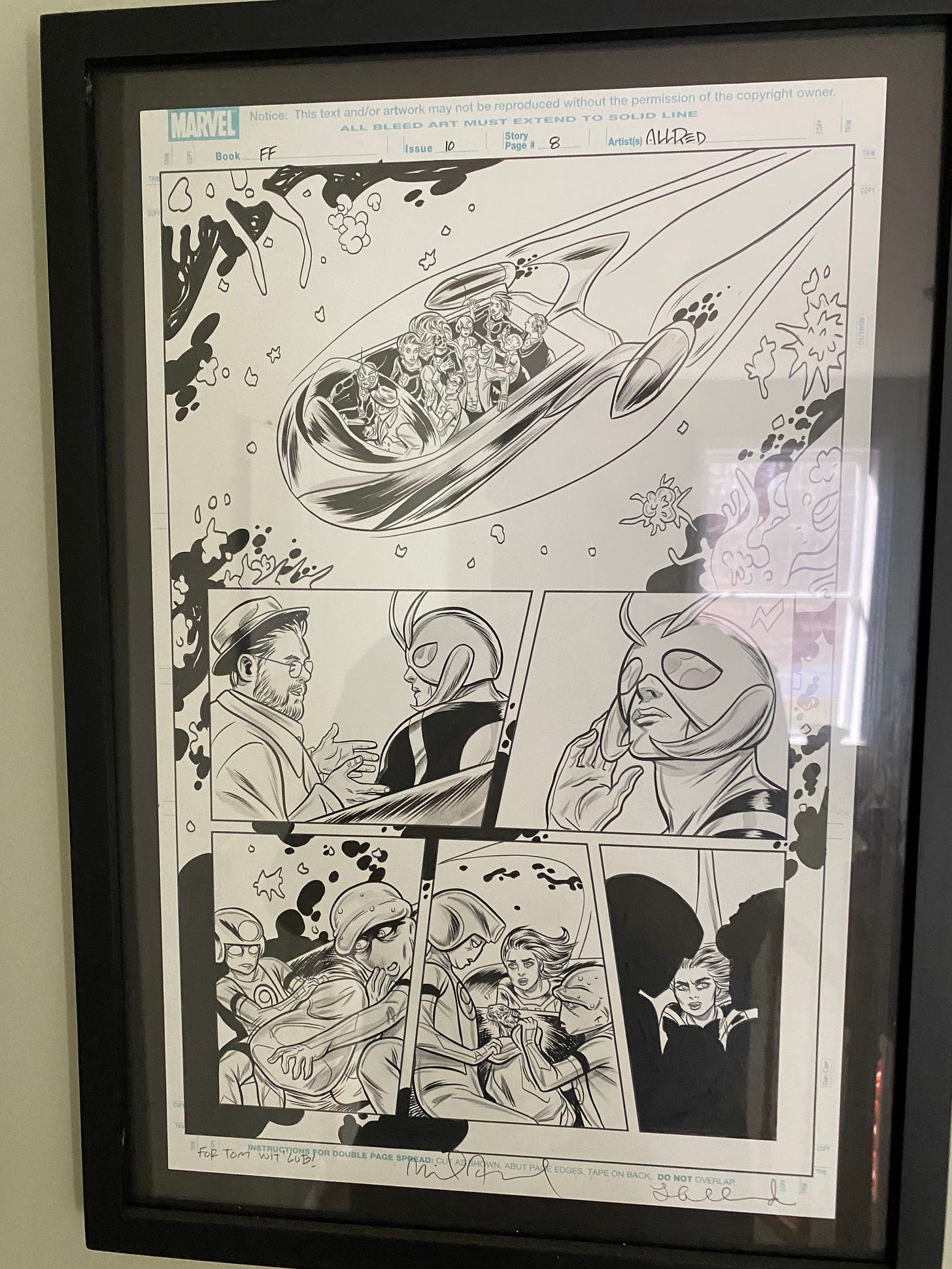



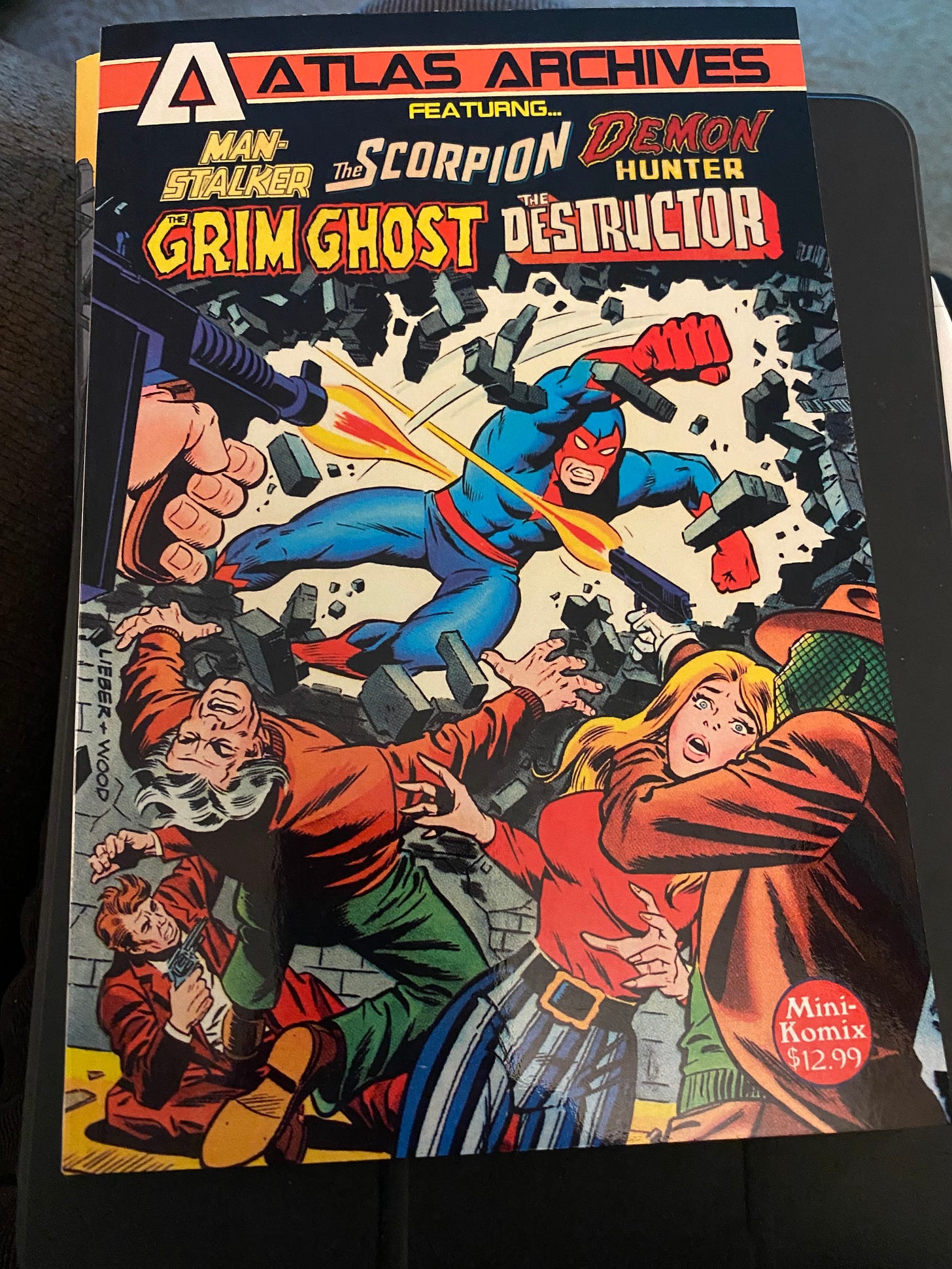
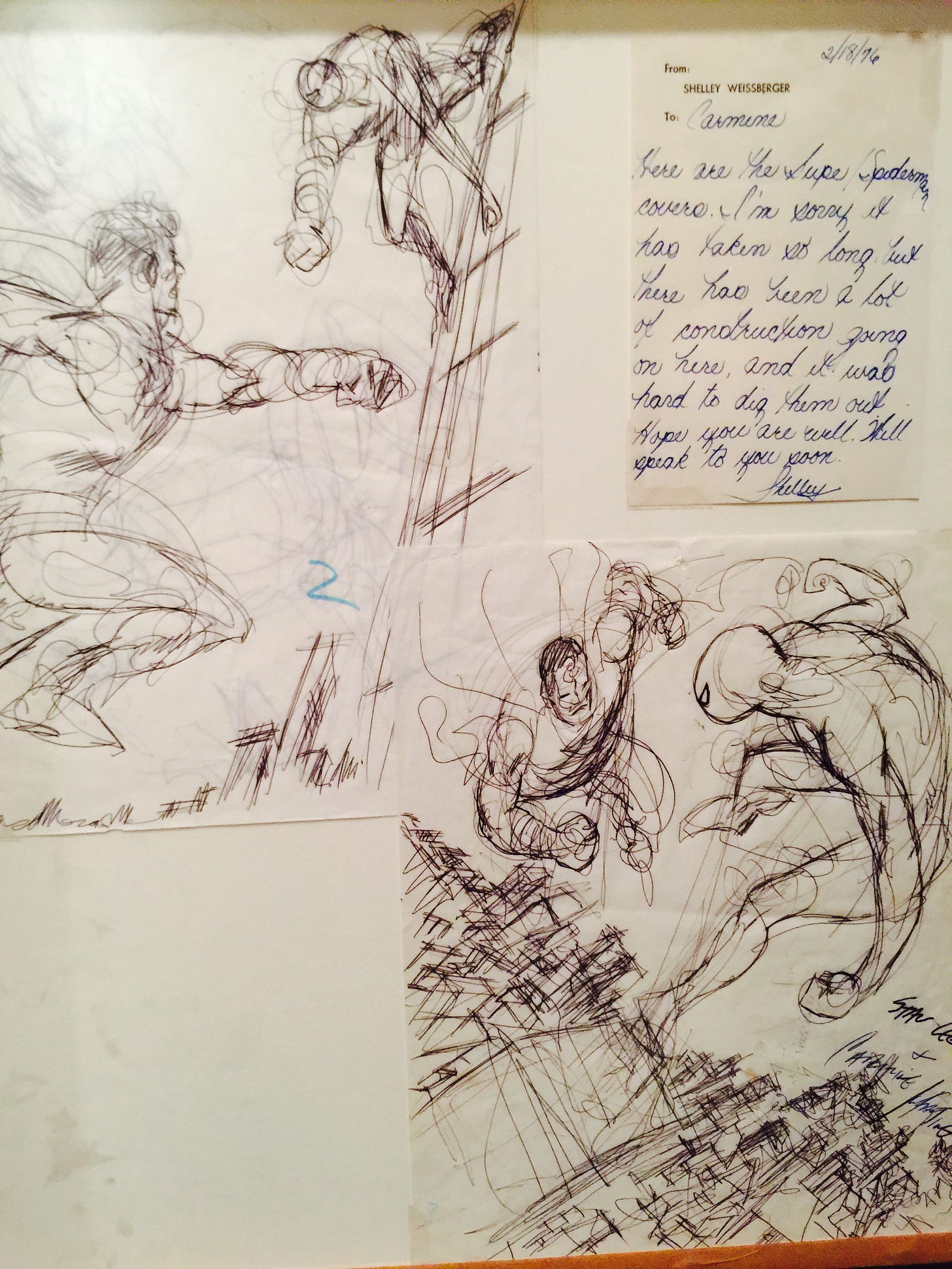
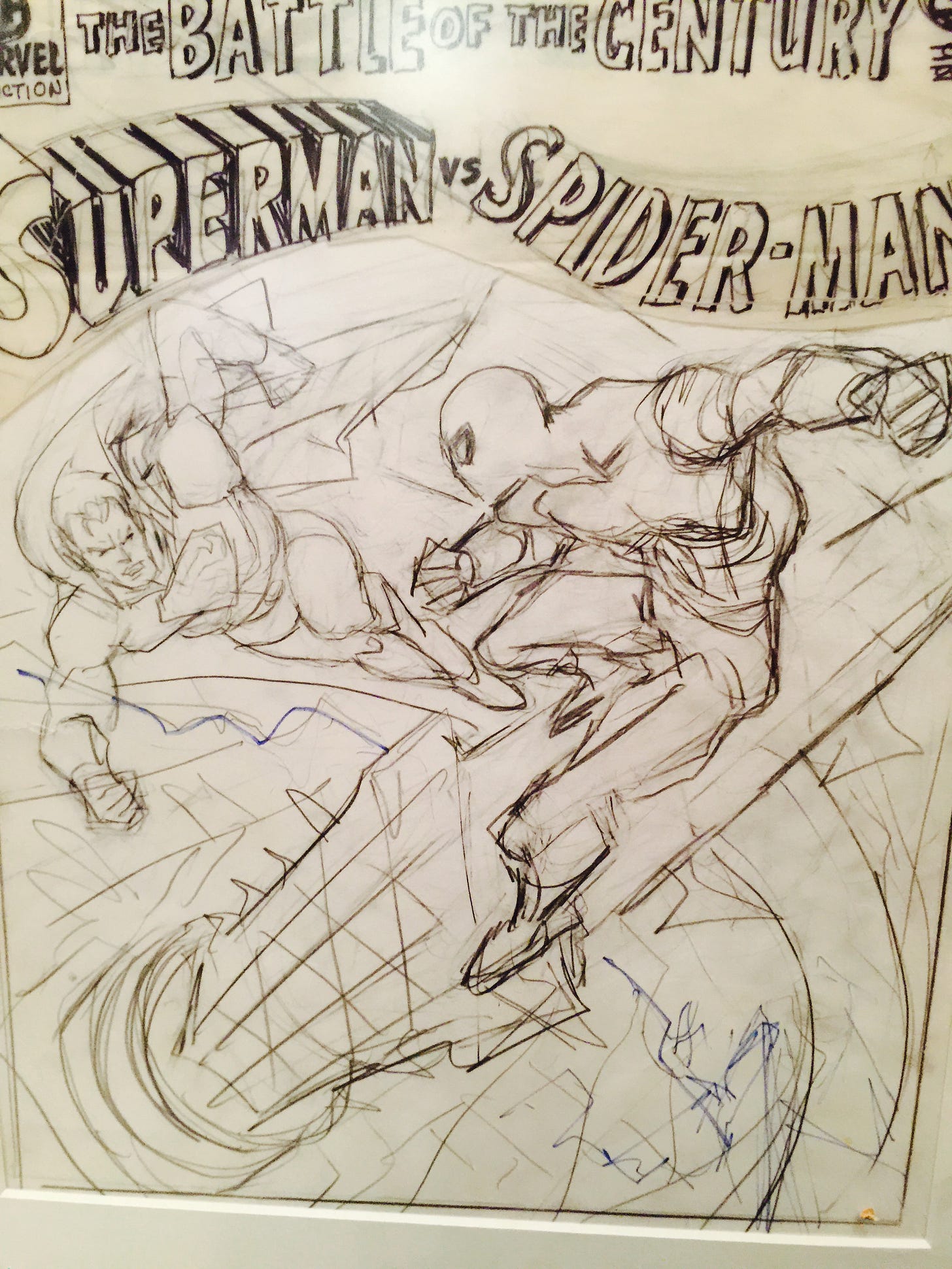
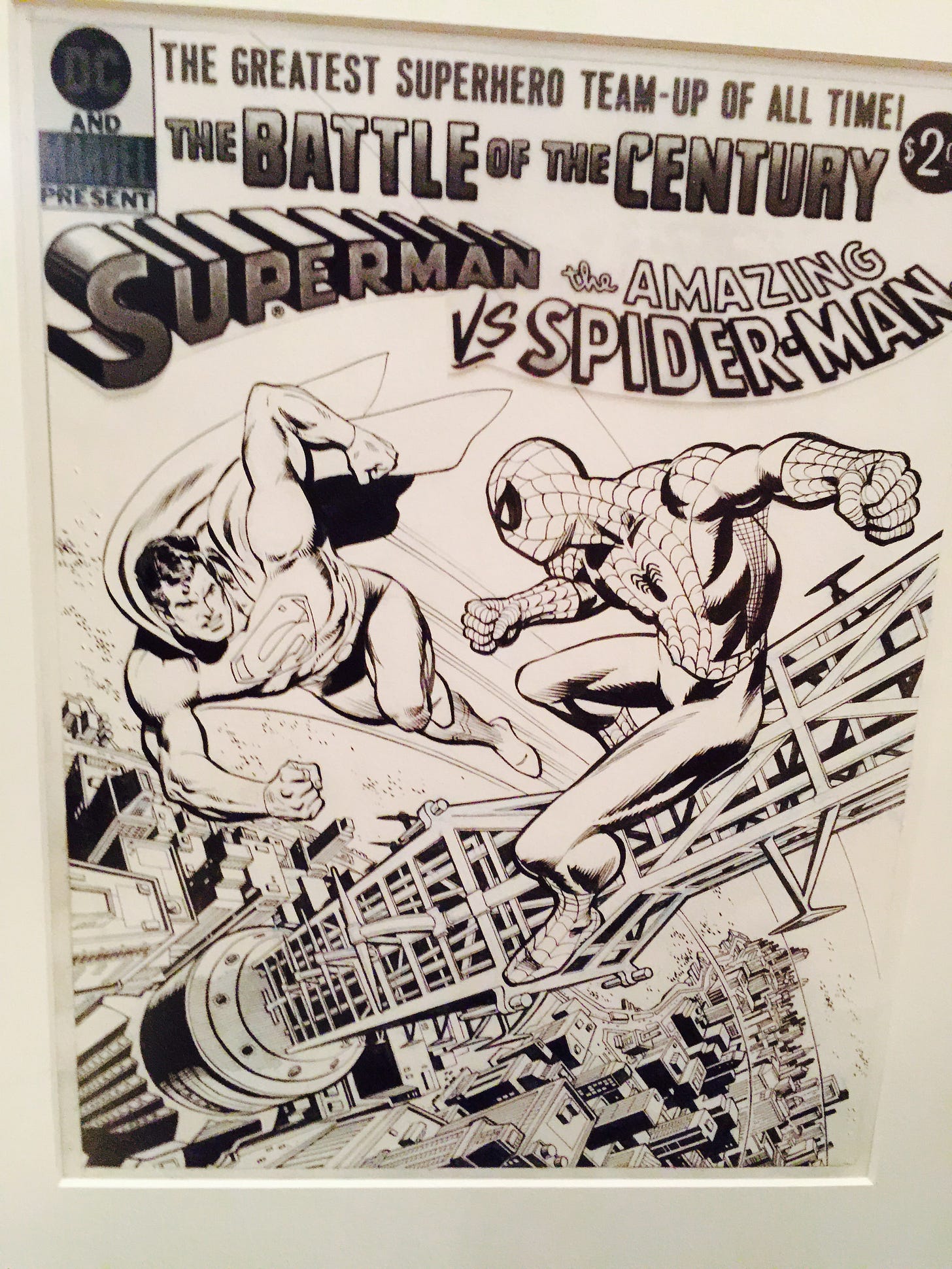


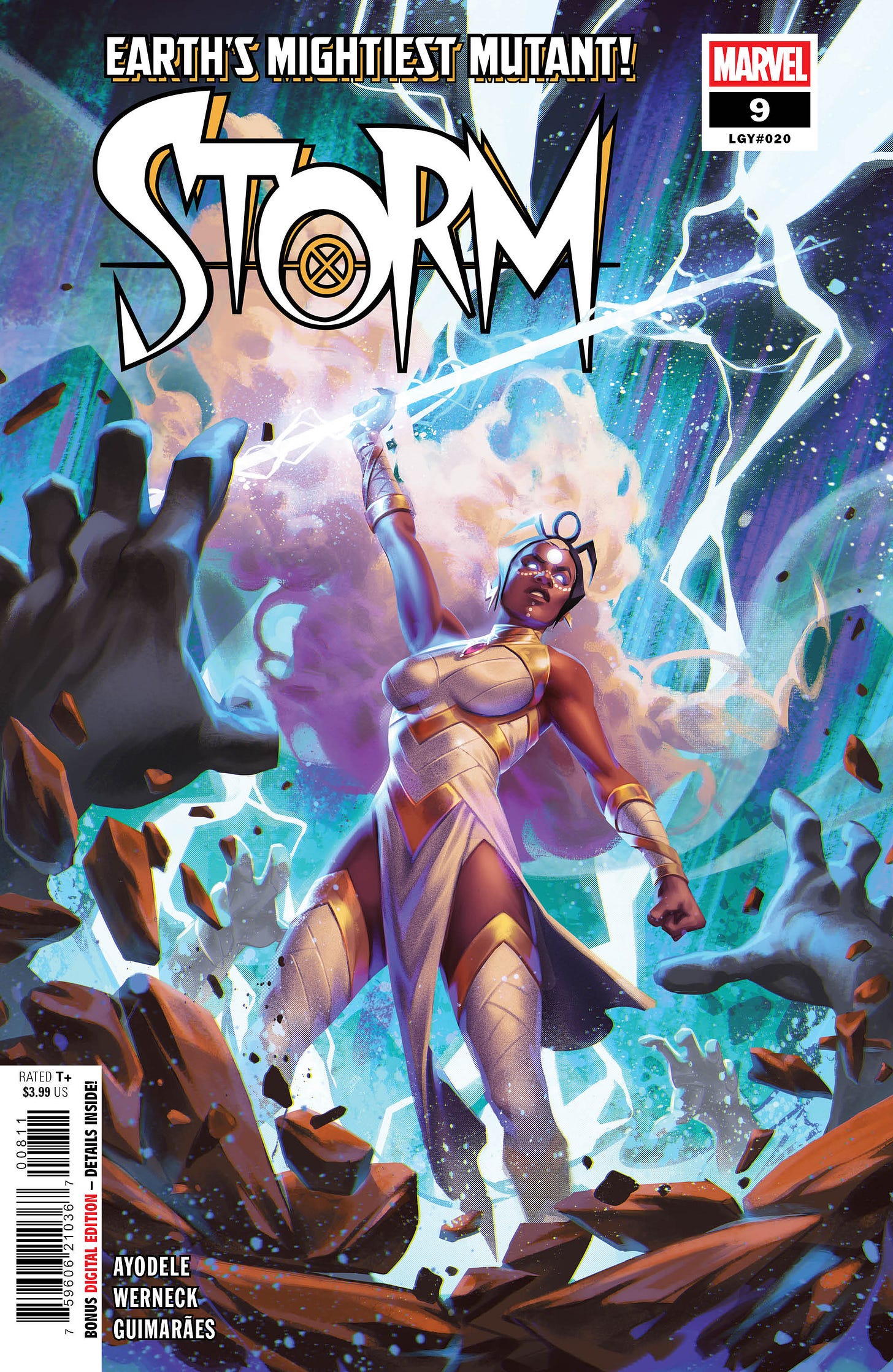


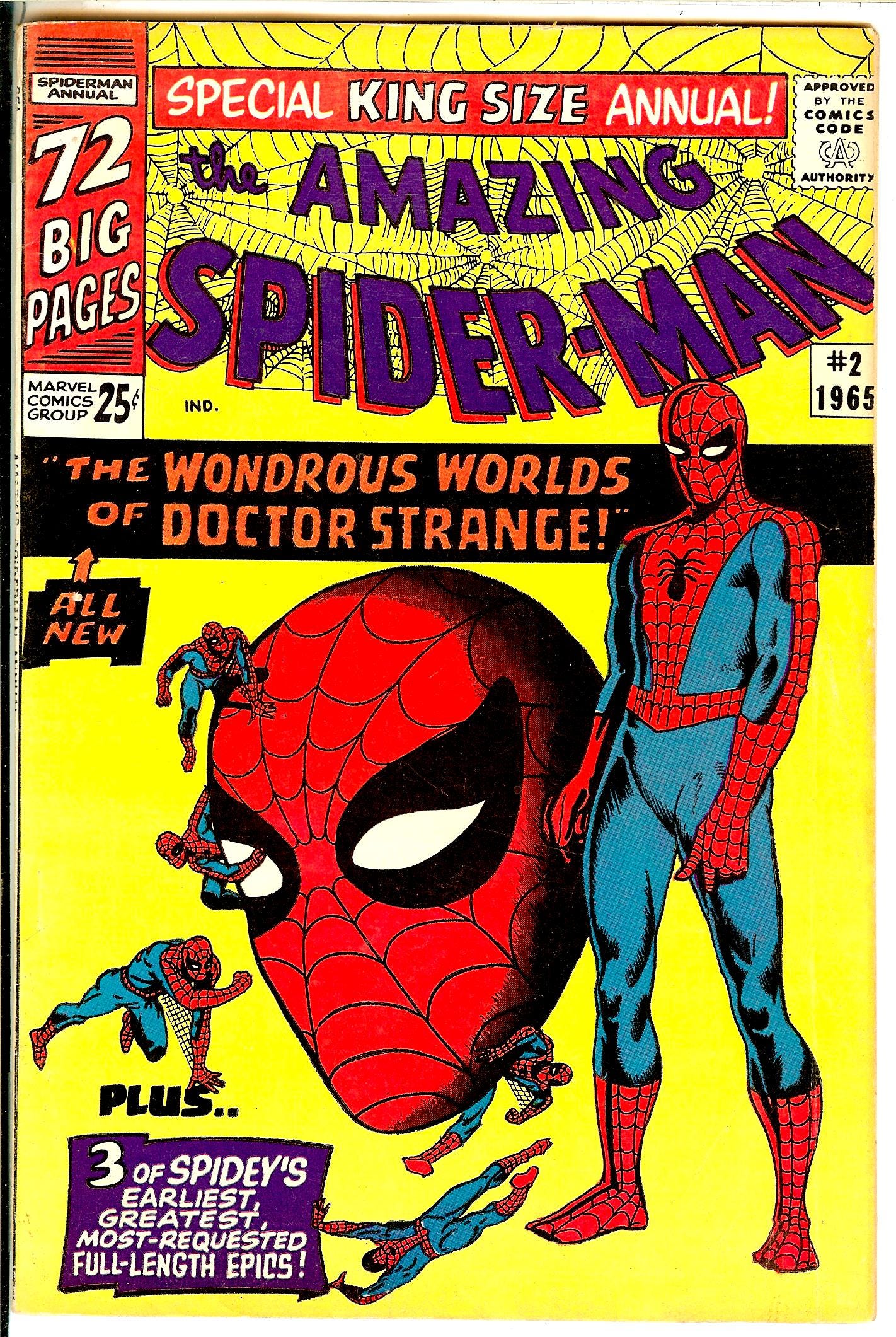
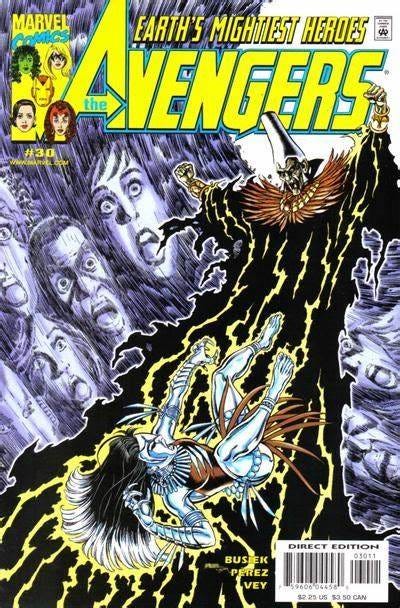


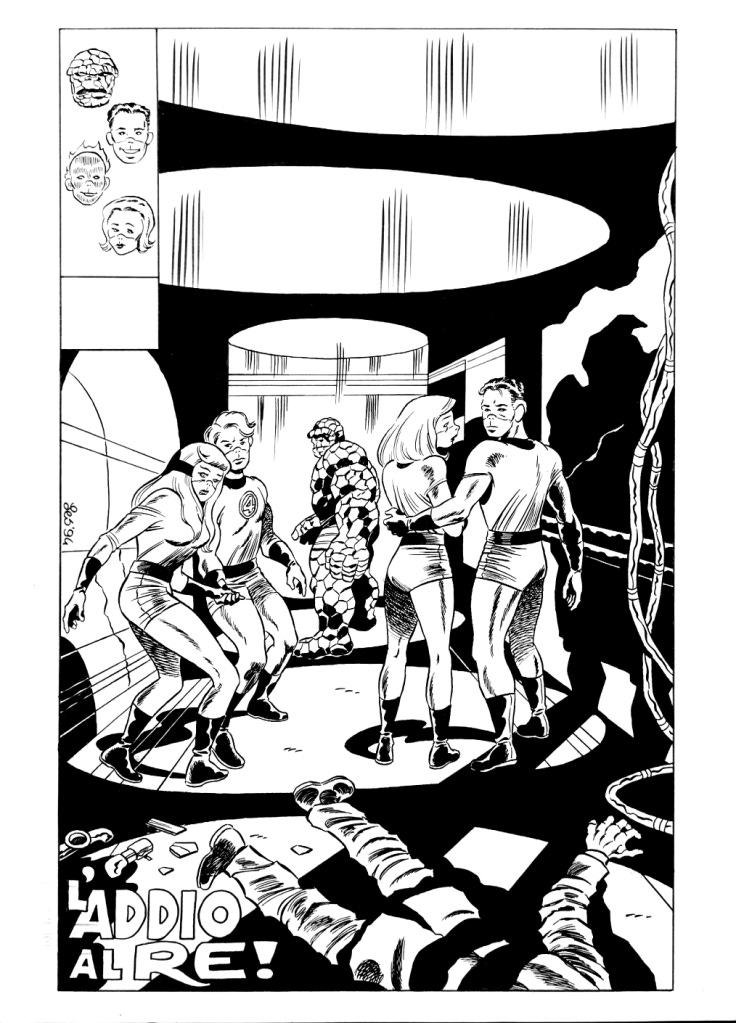
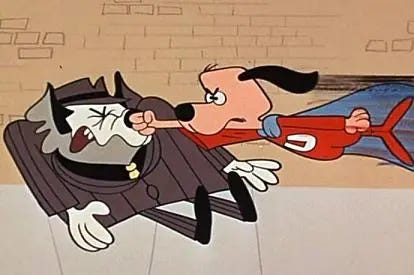
Tom, I just want you to know: I consider you to be a friend who can fire me.
Peter David was a tremendous talent. One of my favorite comic book writers, as well as my favorite Star Trek novelist.
For anyone who's able to contribute, his family still needs help with medical bills: https://gofund.me/21c0a59b